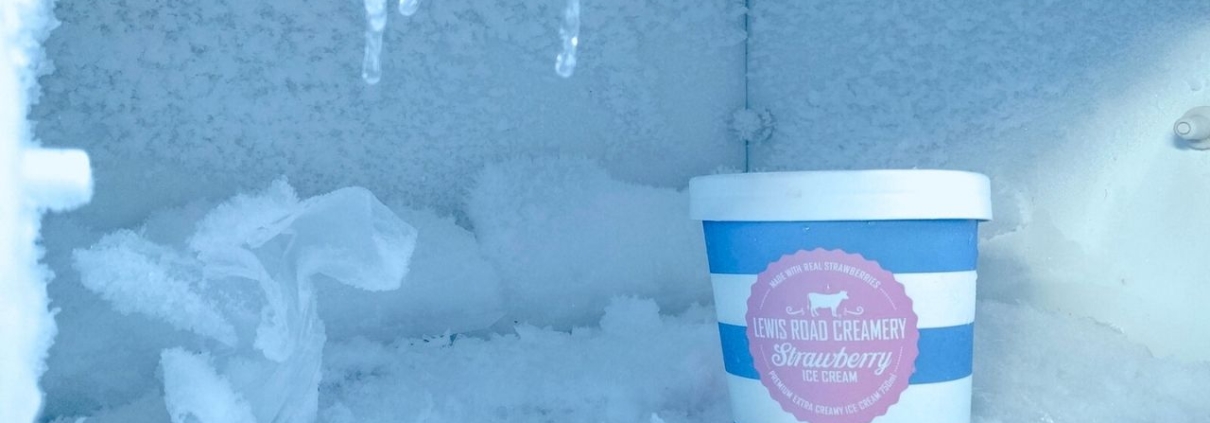Preventing Ice Formation in Your Refrigerator: Effective Tips for a Frost-Free Fridge
When it comes to our refrigerators, nothing is more frustrating than finding a buildup of ice inside. Not only does it reduce storage capacity, but it can also affect the efficiency of the fridge and lead to higher energy bills. However, by following a few simple steps, you can prevent ice from forming in your fridge and keep it running smoothly. In this article, we will explore practical and effective tips to maintain a frost-free refrigerator. If your fridge is giving you a hard time it’s time to contact the best fridge repair service provider Cyborg Services.
7 Tips for a Frost-Free Fridge
-
Optimal Temperature Settings:
One of the primary causes of ice formation in refrigerators is incorrect temperature settings. Ensure that your fridge is set to the ideal temperature, which is usually between 35 to 38 degrees Fahrenheit (1.7 to 3.3 degrees Celsius). Setting the temperature too low can lead to excess condensation and subsequent ice buildup.
-
Proper Food Storage:
Proper food storage plays a crucial role in preventing ice formation. Make sure all food items are covered or stored in airtight containers to minimize moisture in the refrigerator. Uncovered or improperly sealed containers release moisture into the fridge, contributing to ice formation. Grouping similar items together in designated areas can also help maintain proper airflow and reduce the risk of frost.
-
Regular Defrosting For a Frost-Free Fridge
Regularly defrosting your refrigerator is vital to prevent ice buildup. Ice accumulation can hinder proper airflow and reduce cooling efficiency. If your fridge does not have an automatic defrosting feature, plan to defrost it at least once every three to six months, depending on the level of ice formation. Empty the fridge, turn it off, and allow the ice to melt naturally. Remember to place towels or containers to catch the melting ice and prevent water damage.
-
Adequate Air Circulation:
Ensure that there is proper airflow in your refrigerator by avoiding overcrowding. When items are tightly packed, the circulation of cool air becomes restricted, leading to temperature imbalances and potential ice formation. Organize your food items, leaving space between them for air to flow freely. This will help maintain a consistent temperature throughout the fridge and minimize the formation of frost.
-
Check Door Seals :
Faulty door seals are a common culprit behind ice formation. Inspect the gaskets around the fridge door for any cracks, tears, or gaps. If you notice any issues, replace the seals promptly to maintain a tight seal. Loose or damaged seals allow warm air to enter the refrigerator, leading to condensation and ice buildup. Regularly cleaning the seals with mild soapy water also helps ensure they remain free from debris and maintain their effectiveness.
-
Avoid Warm or Hot Foods:
Allowing warm or hot food items to cool down before placing them in the refrigerator can significantly reduce the risk of ice formation. Placing hot items directly into the fridge can cause moisture buildup and temperature fluctuations, leading to frost accumulation. Use a cooling rack or let the food cool on the counter before transferring it to the refrigerator.
-
Clean the Interior for a Frost-Free Fridge:
Regular cleaning of the interior surfaces of your fridge is essential for preventing ice formation. Spilled liquids, food debris, and residue can create a conducive environment for frost to accumulate. Clean the shelves, walls, and drawers with mild detergent and warm water. Rinse thoroughly and dry before restocking the fridge.
Conclusion:
A frost-free refrigerator not only ensures the freshness and longevity of your food but also contributes to energy efficiency. By following these practical tips, you can prevent ice formation in your fridge and maintain optimal cooling performance. Remember to adjust temperature settings, practice proper food storage, defrost regularly, promote air circulation, check door seals, avoid warm foods, and keep the interior clean. These simple steps will keep your refrigerator ice-free and running smoothly for years to come. Remember if you are having any trouble with your fridge just give us a call, and we’ll be at your doorstep.



